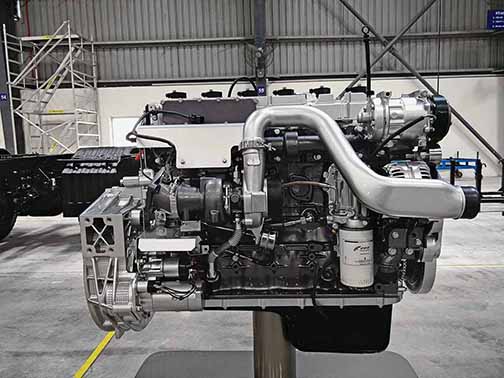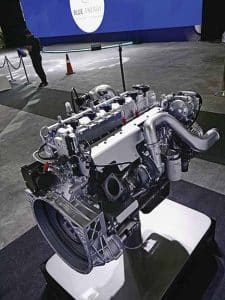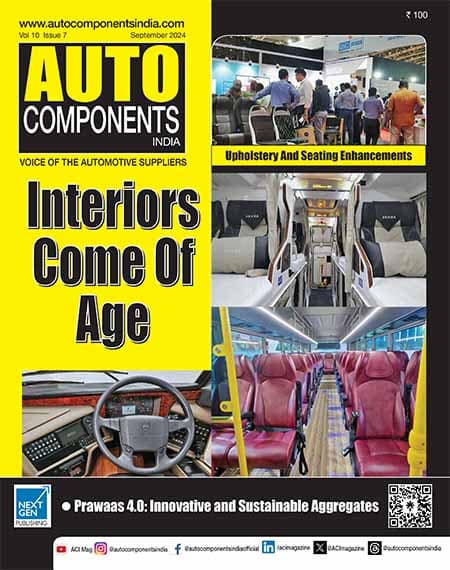FPT Industrial, the IVECO Group company has grand plans for India. Prateek Pardeshi assesses the gas engines as the foundation of this strategy.
Fiat Powertrain Technologies (FPT) Industrial was formed as a combined entity with the best of IVECO, CASE IH, and NEW HOLLAND engine, transmission, and axle technology coming together. It is known to have leveraged the expertise and capacity to be at the forefront of new engine technology. With patented technology for Direct-Injection Diesel engines, the company traces its roots back to 1934. In 1938, the first turbocharger was used with a diesel truck engine. The company’s presence in India can also be traced to brands like CNH Industrial in 2013. With its recent partnership with Blue Energy Motors, for the 5528 LNG truck, the company with a projected capacity of 10,000 units per annum has set the ball rolling again.
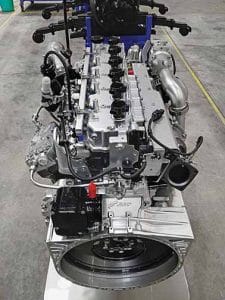 The company is known to have tasted its first success with alternative fuel technology when it introduced Compressed Natural Gas (CNG) engines on Light Commercial Vehicles (LCVs), in 2002. The agreement that has the company own a minority stake in Blue Energy Commercial Vehicles Pvt. Ltd., a zero-emission truck technology company headquartered in Pune, Maharashtra is the base it hopes to build upon. Commenting on the India foray, Sylvain Blaise, President-Powertrain Business Unit, Iveco Group, said, “It is a great honour for us to serve Blue Energy Motors with our N67 NG supply engine agreement, and at the same time enlarge the scope of our partnership confirming our commitment as a technology provider to fully exploit our capability in alternative propulsions.” This agreement is the first step in a potential long-term partnership, based on the specific characteristics of the Indian commercial transport market.
The company is known to have tasted its first success with alternative fuel technology when it introduced Compressed Natural Gas (CNG) engines on Light Commercial Vehicles (LCVs), in 2002. The agreement that has the company own a minority stake in Blue Energy Commercial Vehicles Pvt. Ltd., a zero-emission truck technology company headquartered in Pune, Maharashtra is the base it hopes to build upon. Commenting on the India foray, Sylvain Blaise, President-Powertrain Business Unit, Iveco Group, said, “It is a great honour for us to serve Blue Energy Motors with our N67 NG supply engine agreement, and at the same time enlarge the scope of our partnership confirming our commitment as a technology provider to fully exploit our capability in alternative propulsions.” This agreement is the first step in a potential long-term partnership, based on the specific characteristics of the Indian commercial transport market.
Committed to growth
During the recent ‘BEYOND – Iveco Group Days,’ FPT Industrial announced the official establishment of the first Blue Energy Motors assembly plant at Chakan, in Pune, for the production of the first LNG trucks. The investment is a part of a more ambitious plan to play a key role in India’s decarbonisation aspiration. Although the collaboration is currently focused on NG fuel applications, the company doesn’t rule out the support and joint development of future e-mobility-related projects.
Global benchmarking
Compared to Europe, North America, and China, engines in India are often deemed underpowered. It is only recently that the power-to-weight ratio is being revisited with engines capable of developing 300 hp at 2300 rpm and 460 hp at about 1900 rpm. A leading OEM had demonstrated performance variants of a 1000 hp engine on its tractor in the distant past. This is a long way from the erstwhile 180 hp heavy-duty trucks. With road trains being looked at as a viable option for India and LNG engines optimised to munch 1000 km plus miles, FPT Industrial wants to offer an ideal solution to start off with. It is claimed to have cracked a lower Total Cost of Ownership (TCO) with the N67, a six-cylinder 6.7-litre engine that is claimed to develop 280 hp and a peak rated 1000 Nm torque.
This was possible after a two-year development cycle with the added USP of the engine being compatible with CNG and bio-methane. Blaise confirmed, the company has pioneered this type of technology in Europe where it was able to build a market-leading position. He explained, the company has leveraged this and over the last 18-24 months adapted the technology with specific tweaks to suit the needs in India and still make it at par with the diesel engines in operations.
India Outlay
To attain economies of scale in India, the company will first test the waters with CBUs imported to India from Italy. Based on the acceptance in the market, the company could look at assembly and eventually higher localisation content. Blaise mentioned that the industrial setup in India is quality-conscious courtesy of a full ecosystem around the automotive and truck industry. So, for FPT Industrial, to start in India, was akin to a plug-and-play effort which allowed it to scale up its footprint, to begin with. In the next phase of growth leading up to 100 per cent localisation over the long term, he explained, that progress depends on the maturity of the market and the volumes the company is able to build up over time. “We’re already leveraging some Indian local sourcing for starters and hope to build on it as we go ahead,” he concluded without delving into specifics on the outlay of the engine business leaving it for another opportune time.
Why LNG?
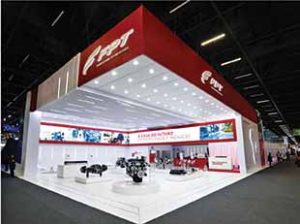 China launched LNG trucks for the first time in 2015-16. They were estimated to have sold 15,000 trucks in the first year, considering the market was much larger. Today they are selling 150,000 trucks representing 14 per cent of the market. This was made possible only because the LNG was made available around the coastline, not so much inland. Okay. If you use that as an example, in India, we believe the operating economics of LNG is superior to China. So depending upon the proliferation of the LNG network with an estimated 1,000 outlets expected to cater to the demand over the next five years, the company, found it fit to commercialise a new range of alternative solutions first showcased at Fenatran 2022, held in São Paulo Expo, Brazil. The engine range consists of the F1, NEF and CURSOR models from a 97-600 hp capacity in options of LNG, CNG, Diesel and Bio-methane. ACI
China launched LNG trucks for the first time in 2015-16. They were estimated to have sold 15,000 trucks in the first year, considering the market was much larger. Today they are selling 150,000 trucks representing 14 per cent of the market. This was made possible only because the LNG was made available around the coastline, not so much inland. Okay. If you use that as an example, in India, we believe the operating economics of LNG is superior to China. So depending upon the proliferation of the LNG network with an estimated 1,000 outlets expected to cater to the demand over the next five years, the company, found it fit to commercialise a new range of alternative solutions first showcased at Fenatran 2022, held in São Paulo Expo, Brazil. The engine range consists of the F1, NEF and CURSOR models from a 97-600 hp capacity in options of LNG, CNG, Diesel and Bio-methane. ACI
Also read, New Challenges For Engine Sensors In Hybrid Powertrains


